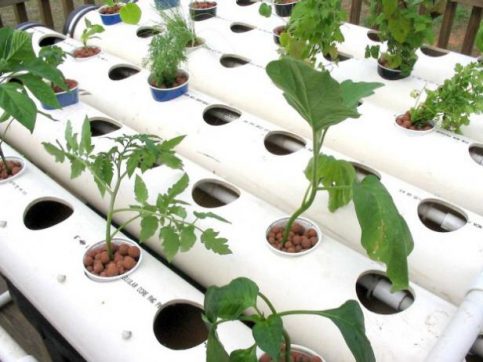This blogpost is part of a 4-post series where we are celebrating the role of science in agriculture. World Science Day is observed every year on November 10 as a reminder for us to acknowledge and appreciate the role of science in our lives.
Like all industries, the future of agriculture is also dependent on innovation and science. Today, the sector is facing multiple challenges, the most critical being availability of land. With urbanization and industrialization, the available land for agriculture is deteriorating and scientists have been investing efforts to produce more with less.
One promising innovation that is readily being adopted by young farmers, urban enthusiasts and small farm collectives is hydroponics. Let us now understand how and why hydroponics is so popular.

What is hydroponics?
In simple terms, hydroponics is the process of growing plants in liquid, sand or gravel, with added nutrients but without soil. The science of hydroponics is therefore, helping farmers grow food in poor soil conditions, limited enclosures and even in places where at one time, farming wasn’t feasible. The process gives farmers 100% control on growing conditions, allowing them to take decisions on nutrition supply, water usage, temperature, lighting schedules etc, it mainly reduces the need for pesticides as the lack of soil lowers infestation.
Maintaining the plant growth cycle
The hydroponic systems need to provide all the necessary nutrients to a plant so it can grow and maintain its proper lifecycle.
- Natural lighting provides energy necessary for photosynthesis
- Minerals, oxygen and water are delivered through the root system
- Plants need to be carefully supervised so they can maintain the ideal level of growth
Why is Hydroponics exciting?
When compared to the traditional soil cultivation, hydroponics opens up a lot of possibilities to grow nutrient-rich plants in a controlled environment. Therefore, exotic plants can be grown with ease in limited space with managed life cycle. It enables efficient use of resources, with recycling of nutrients without inputs wastage through weeds and pests.
Hydroponics is also giving a boost to urban farming and can be practiced in neighbourhoods and societies. Similarly, hydroponics greenhouses can be constructed close to food market hubs, to reduce farm to market commute. This keeps the produce fresh and its nutrients intact. Hence, overall the quality of food supply also improves.
Some other benefits are as follows:
- Since water supply is managed by farmers, it can help in up to 90% efficient use of water[1]
- With careful and precise inputs, production is expected to increase by 3-10x[2]
- Reduces land requirements to almost 1/5th, making it a more sustainable agrarian practice[3]
Read another article – Hydroponics for beginners
Types of Hydroponic System
There are six different types of hydroponic system. One can use multiple techniques to get the nutrient solution to the plants. The choice of the system depends on the plants as well as the available space and conditions.
- Deepwater Culture
- Nutrient Film Technique
- Aeroponics
- Wicking
- Ebb & Flow
- Drip System
Hydroponics is an exciting method for young farmers to grow their plants as it is a new and upcoming field. If young scientists and agri enthusiasts invest time in this technique, they will be able to transform it into a viable and cost-effective agrarian method.
[1] https://greenourplanet.org/benefits-of-hydroponics/
[2] https://greenourplanet.org/benefits-of-hydroponics/
[3] https://get-green-now.com/hydroponics-environmental-benefits/

